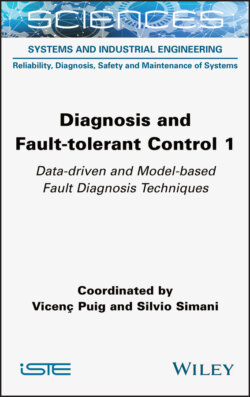Читать книгу Diagnosis and Fault-tolerant Control 1 - Группа авторов - Страница 14
I.4. Model-based fault diagnosis
ОглавлениеThis diagnosis task detects faults in the technical process, including actuators, components and sensors by measuring the available input and output variables u(t) and y(t). The principle of model-based fault diagnosis is depicted in Figure I.2.
Figure I.2. Scheme for the model-based fault diagnosis
Basic process model-based FDI methods have been described by Patton et al. (1989, 2000), Basseville and Nikiforov (1993), Gertler (1998) and Chen and Patton (1999), which include the following steps:
1 1) output observers (OO, estimators, filters);
2 2) parity equations;
3 3) identification and parameter estimation.
These methods generate residuals for output variables with fixed parametric models using step 1, fixed parametric or non-parametric models using step 2 and adaptive non-parametric or parametric models using step 3.
An important aspect of these methods is the kind of fault to be detected. As noted above, one can distinguish between additive faults, which influence the variables of the process by summation, and multiplicative faults, which are products of the process variables. The basic methods show different results, depending on the type of fault.
If only output signals y(t) can be measured, signal model-based methods can be applied, for example, vibrations can be detected, which are related to rotating machinery or electrical circuits. Typical signal model-based methods of fault detection are as follows:
1 1) bandpass filters;
2 2) spectral analysis (FFT);
3 3) maximum-entropy estimation.
The characteristic quantities or features from fault detection methods show stochastic behavior with mean values and variances. Deviations from the normal behavior must then be detected by methods of change detection (residual analysis, Figure I.2), such as:
1 1) mean and variance estimation;
2 2) likelihood-ratio test, Bayes decision;
3 3) run-sum test.
